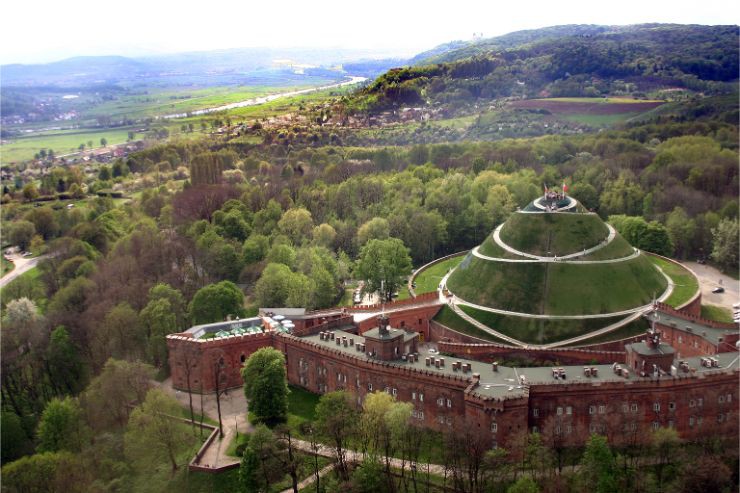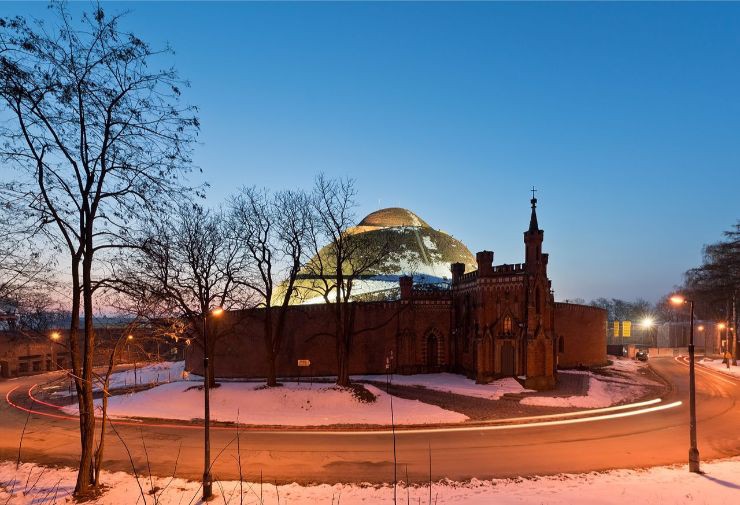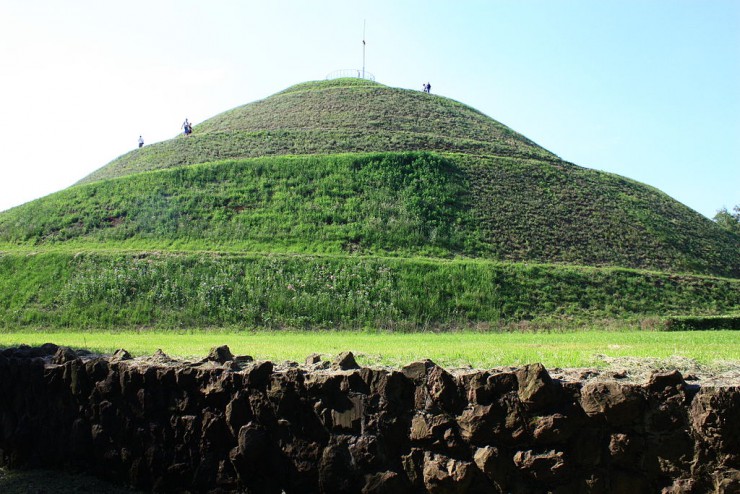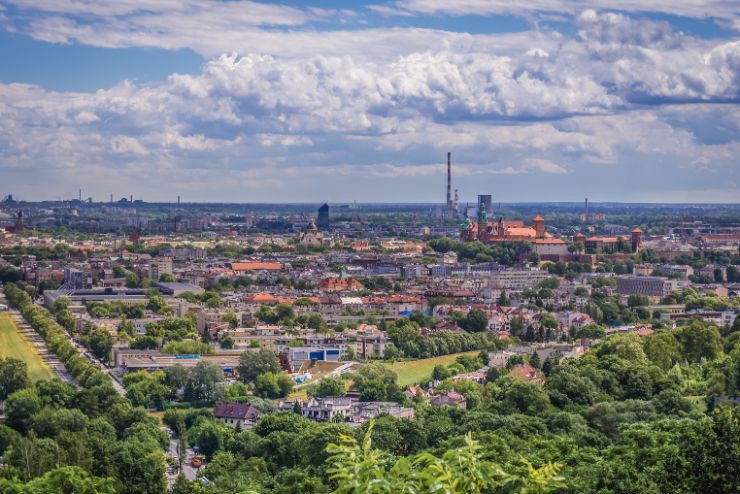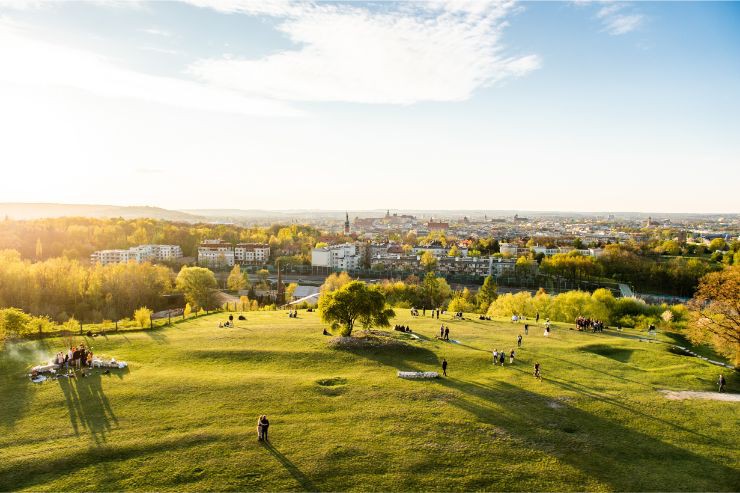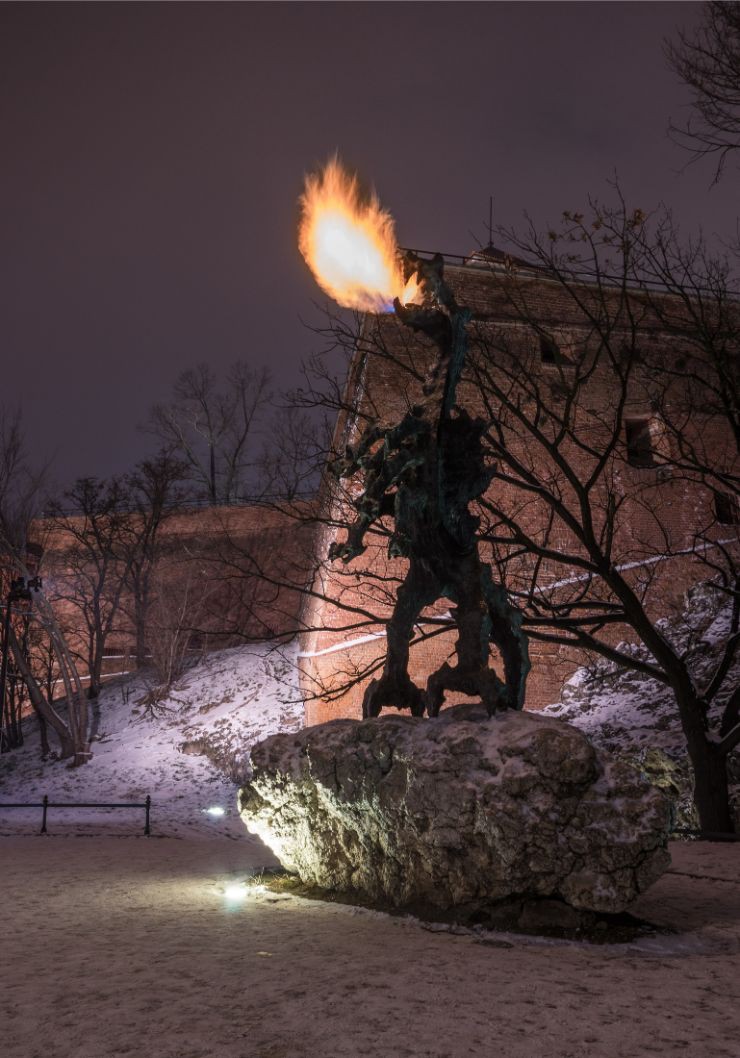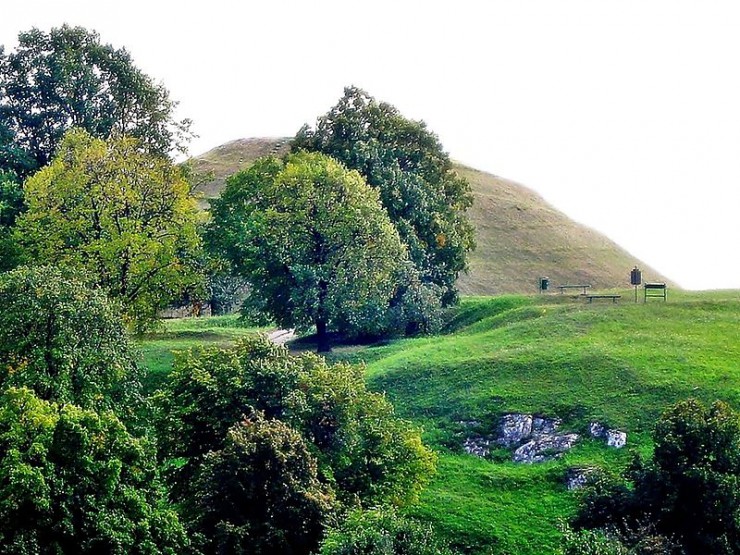The mounds in Krakow are an inseparable element of the city's skyline. Rising above all the buildings is the Kosciuszko (Kościuszko) Mound. It can be seen from almost every part of the city. However, it isn't the only mound in Krakow with a story worth telling – other famous mounds in Krakow include the Pilsudski, Krakus and Wanda Mounds. Read on and learn interesting historical facts about them!
Kościuszko Mound
This mound towers over the Krakow walls and is perfectly visible from almost every part of the city center (and not only). This mound is located in the Zwierzyniec district, on the St. Bronisława's hill. Why is it so famous? Find out by reading the top 5 facts about it!
17. In honor of the hero
The mound was erected in honor of the national hero Tadeusz Kościuszko (1746-1817), who served, among others in the role of lieutenant general of the Polish Army and a brigade general of the Continental Army during the US Revolutionary War. Under the leadership of Tadeusz Kościuszko, an uprising broke out in Krakow in 1794.
16. Earth taken from battlefields
The erection of the Kościuszko Mound lasted 3 years – from October 16, 1820 to October 25, 1823. The starting date of the of construction is not accidental – it was the 3rd anniversary of the general Kościuszko's death. The idea of building the mound came from Franciszek Jarczewski. The mound is composed of earth taken from the battlefields of the Kościuszko Uprising (Racławice and Maciejowice) and the areas of the independence fights of the United States took place.
15. 3 steps away from destruction
Currently, the Kościuszko Mound proudly towers over the city, but in the past the structure has been almost destroyed several times. The first situation took place in 1853, when the Austrian partitioners wanted to demolish it and create fortifications around the area. Another black date was 1941. The mound disturbed the governor Hans Frank, who wanted to destroy symbol of Polish power and culture in the capital of the General Government.
A heavy, long-lasting rainfall in 1997 proved to be the last difficult situation to date. The reconstruction of this Krakow mound lasted 3 years and consumed nearly PLN 15mln. Fortunately, it was restored and in 2002 the mound was reopened to visitors.
14. Kosciuszko Mound: Krakow's historical monument
Quite recently, on November 23, 2017, the mound named after Tadeusz Kościuszko was officially recognized as a historical monument. Not only the Kosciuszko Mound itself gained a new status. Also the areas directly belonging to it: the retaining wall, the Chapel of the Blessed Bronisława, former barracks of fort no. 2 "Kościuszko", George Washington's avenue as well as its surrounding ramparts.
13. View from the Kosciuszko Mound: Krakow
As mentioned earlier, the mound named after the national hero Tadeusz Kościuszko enriches city skyline and is visible from almost every point in Krakow.The mound itself is open to visitors. You can go to the top of the mound and see a commemorative plaque. However, what will definitely interest you as a visitor is the amazing panorama of Krakow, stretching in all directions. The mound itself is over 35 m high, but it is located on a hill, which altogether gives a height of over 330 m above sea level! If you love to document panoramas, then this Krakow place is a must.
Pilsudski Mound
This mound is the largest of all five mounds that you can come across in Krakow. It also has several other names: Independence Mound, Freedom Mound, Grave of Graves and Sowiniec. It is built on the top of the Sowiniec Range, which is located in the Zwierzyniec district of the Wolski Forest. This is not only the largest mound in Krakow, but also in all of Poland.
12. Named after Marshal Józef Piłsudski
The mound was named after the marshal of Poland Józef Piłsudski (1867-1935). He was a well-known statesman, independence activist, soldier and politician (two-time Polish prime minister during 1926-28 and 1930). To properly elevate this mound, the Mound Construction Committee was formed. Colonel Walery Sławek was head of the Committee. The mound was constructed in honor of the nation's struggle for independence, and it was named after Józef Piłsudski after the marshal's death. Construction of the mound was completed on July 9, 1937
11. Mogiła Mogił (Grave of Graves)
The names of the Pilsudski Mound are directly related to the struggle for independence. However, while the symbolism of the names ‘Independence Mound’ or ‘Mound of Freedom’ is understandable to everyone, the name Grave of Graves (Mogiła Mogił) requires delving into the history of the mound. Krakow citizens, and Poles in general, brought land for its construction in special urns from all places where fights took place during World War I (as well as from battle grounds and places of torture which took place from 1794-1920). Before the outbreak of World War II, earth from 3,600 places was lain on the mound! There is also earth taken from the grave of Józef Piłsudski's mother.
10. Ten thousand builders
After the death of Marshal Józef Piłsudski in May 1935, the speed of work on erecting the mound increased significantly. Thousands of Poles who wanted to pay tribute to the national hero in this way joined the construction efforts. At one point there were so many volunteers that they had to be brought to Krakow by special trains! On some days there were even as many as 10,000 builders, which clearly shows the scale of how Poles paid tribute to Piłsudski. It is interesting that the Mound Information Office was established at the Main Station near the Wołodkiewicz Palace. It coordinated the travel and work of those who came.
9. Gloomy times of the PRL
When Poland was ruled by communist authorities, the idea arose to raze the Pilsudski Mound. In 1953, a tank drove to the top of the mound and destroyed a granite slab and a fragment of the slope. Fortunately, the plan of the total devastation of the mound failed, because the authorities of the Polish People' Republic could not cope with such a large mass of earth. Therefore, the original plans were modified to blend the mound into the surroundings of the Wolski Forest.
The name was also changed to one that was not politically associated in any way - the mound was called "the viewpoint in Sowiniec". 10 years later, in 1963, Krakow craftsmen managed to restore the base of the mound and strengthen its perimeter walls.
Mounds in Kraków: Wanda and Krakus
Krakus Mound is located in the Podgórze district and rises from Lasota Hill. It is much lower than the other two mounds because it measures only 16 m in height. The Wanda Mound is located in Nowa Huta and is 14 m high. No other Krakow mound is as representative as the Kosciuszko or Pilsudski mounds, nevertheless, it is worth learning the history of each of them.
8. The legend of Wanda
According to legend, the Wanda Mound houses the tomb of the daughter of Prince Krak, who apparently drowned in the waters of the Vistula.The legend of Wanda is very famous in Poland and is entitled: "Wanda, who didn't want a German." According to legend, Wanda refused to marry a German prince and he felt offended and invaded the Polish lands with an army. The Polish army managed to repel the attack, but unfortunately the princess committed suicide by throwing herself from the banks of the Vistula.
7. Sunrises and sunsets
On November 4th and February 6th, when standing on the Wanda Mound, we will see the sun setting over the Krakus Mound. In turn, if we stand on the Krakus Mound on May 2nd and August 10th, we will see the sunrise over the Wanda Mound.These sunrises and sunsets create amazing circumstances for photographers, but they also carry a different symbolism – the dates mentioned are approximate periods of Slavic holidays, such as Dziady (which Mickiewicz wrote about), Gromnica and Perun's day.
6. Village of Mogiła
The Krakow mound which was named after Wanda initially had a different name: Mogiła (The Grave).The first mention of the mound dates back to the 13th century, although the exact date of the mound's creation is unknown. It is possible that it was erected a few hundred years earlier, in the 7th or 8th century. Although there are even sources that date its creation during the construction of the Krak Mound to the first century AD. The mound was initially named Mogiła (Grave). The similar name was given to a nearby village. Currently, Mogiła is a part of the Nowa Huta district in Krakow.
5. In honor of the legendary Krak
Krak Mound, probably the oldest Krakow mound (the official date of its creation is unknown) is associated with stories about Prince Krak – the legendary founder of the city of Krakow and the ruler of the Poles. Information about him is found in the chronicles of Wincenty Kadłubek. He was the father of "Wanda, who didn't want a German." According to the legend, he had two sons who supposedly killed the dangerous Wawel Dragon.
4. The legend of the Wawel Dragon
The figure of Krak is associated with the legend of the Wawel Dragon – a bloodthirsty monster that lived in the underground of the Wawel Castle and made the life of the court and inhabitants miserable. The author of the oldest record of the legend was the chronicler Wincenty Kadłubek. As he wrote, Krak ordered his sons to kill the dragon, and after many attempts they finally managed to do so. They planted animal skins stuffed with sulfur, which caused the dragon to "choke on flames from the inside." Unfortunately, later, one of the sons killed the other, however he blamed it on the hungry creature.
According to another version of the legend of the Wawel Dragon, the monster was killed not by the sons of Krak, but by the poor shoemaker Dratewka. After devouring the animal skins stuffed with sulfur, the dragon, wanting to quench its thirst, rushed to drink from the Vistula. It drank and drank, until it finally burst, and thus the city was freed from the sinister beast. The monument and the pit of the Wawel Dragon can still be admired on the banks of the Vistula.
3. Remembrance of the Celts
If it is true that the mounds of Wanda and Krakus were created in the first century AD, it means that they were built in Celtic times. Then the dates of sunrise and sunset would have a different meaning – the mounds would have the function of Celtic astronomical indicators. It is also possible that the Krakus Mound once served as a tomb - it was once surrounded by a huge barrow cemetery (that is mound-shaped graves), which unfortunately has not survived to modern times.
2. Celebration of Rękawka
The mysterious Krak Mound is also associated with interesting celebrations of the Rękawka festival (originally the Slavic tradition of Dziady). The tradition of celebrations included, among others, throwing and rolling eggs, which were a symbol of new life. Today, Rękawka is celebrated on Tuesday after Christian Easter, at the Krak Mound, which used to be called the "Mound Rękawka". According to traditional legends, the ground for the mound was carried to the mound in the workers' sleeves, which is where its name came from("rękaw"="sleeve ").
1. Findings from inside of the mound
In the years 1934-1937 in Krakow mound, named after Krak, archaeological excavations were carried out. They were financed by the editor-in-chief of the Illustrated Daily Courier. Fascinating finds were discovered inside the mound, including traces of the Sorbian culture. The archaeological discoveries included, among others, a child's skeleton and a hearth, which most likely were placed there during the erection of the mound.
Krakow mounds can be visited on foot or by bike. If you are a lover of 2 wheels, be sure to check out our guide – A weekend in Krakow for die-hard bike lovers.
Did the above facts encourage you to visit the famous Krakow Mounds?
